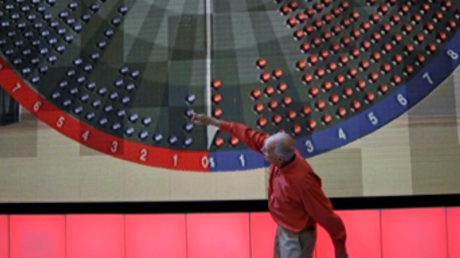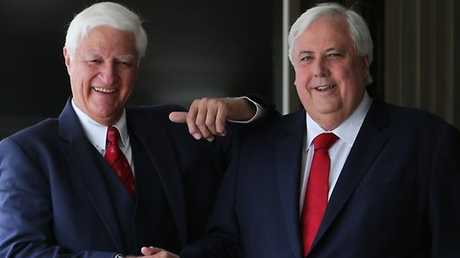This Week's Poll
The table below shows the poll, that poll’s two party result, change from the last issue of that poll, fieldwork dates and sample size. The vast majority of interviews would have been conducted before most people were aware of the election announcement.

There has definitely been a swing towards the Coalition since last week, and the current situation is probably about 51-49 to the Coalition. A fortnight ago, Newspoll was clearly below trend for Labor, but this week it’s closer to the trend. The Poll Bludger’s Bludgertrack poll aggregate shows a Coalition lead of 50.9-49.1, a 0.9% move to the Coalition. The Coalition would have won an election held last weekend.
In my opinion, the reason for the movement to the Coalition is last week’s economic struggles for the government. Raising taxes is never popular, and the government’s pre-election fiscal statement also had bad economic news. Labor could not have avoided this, since, if they hadn’t released an economic statement, Treasury would have delivered very bad news 10 days into the campaign. If the public perception is that the government has failed on the economy, they cannot win. This is why Rudd’s opening address of the election focused heavily on the economy. If Labor can neutralise the economic issue, they will probably win, as Rudd is more electable than Abbott.
When Rudd was restored, the three Eastern seaboard states were about 50-50. In Queensland there was a big surge to Labor because Rudd is a Qld'er, while there was hardly any movement in Victoria because he deposed a Victorian. However, about 6 weeks later, Vic has seen Labor gain further ground, while Qld has gone very much off the boil for Labor, with NSW staying broadly in line with the overall trend. I think some of this could be expected, with Qld’s 50.4% Labor two party vote in 2007 compared to a national vote of 52.7% implying that even with a Qld'er as Labor leader, it’s still about 2.5% more conservative than the nation. Since Qld seemed to be Labor’s one big chance to gain multiple seats and offset losses in other states, this is bad for Labor’s overall chances.
Notes on These Polls
• Newspoll had Rudd’s approval rating dropping, his approval down 4 to 38% and disapproval up 6 to 47%, for a net approval of -9. As I pointed out in my previous post, the PM’s approval rating is more important than preferred PM, and Rudd must improve his approval for Labor to have a chance.
• ReachTEL is a robopollster, and their results favour the Coalition by about 1% relative to other polls. This ReachTEL was conducted after the election was called, but before the 6pm 7 News on the same day, when it was publicised.
• Essential this week had 44% saying that they would definitely not change their mind on who to vote for, and 30% saying it was unlikely. 21% said it was possible they could change their mind. Coalition voters were more likely to be rusted-on. A fortnight ago, Essential asked which party respondents would most trust on various issues; this week they asked which party leader would be trusted. Rudd outperforms his party on all issues. On the economy he only trails Abbott by 3%, while Labor trailed the Coalition by 15% two weeks ago.
• Morgan has been closer to the other polls in the last two weeks than at any time since Rudd’s restoration. This week’s respondent-allocated preferences were a 50-50 tie, as opposed to the 50.5-49.5 Coalition lead using the previous election preferences.
Will the ICAC Findings Affect Labor’s NSW Vote?
Last Wednesday the NSW Independent Commission Against Corruption (ICAC) released damning findings against former NSW Labor powerbrokers Eddie Obeid and Ian Macdonald. Many commentators think that these findings will sink Federal Labor’s chances in NSW. However, the evidence from previous elections is that damage is only done to one branch while the other branch is still in power, but extremely unpopular. Once voters have the chance to get rid of a hated government, whether at state or Federal level, the vote for the other branch recovers.
A good example of this is the 1990 and ‘93 federal elections, both held when Victorian Labor was deeply unpopular due to the failures of the State Bank and general economy. At the 1990 election, state Labor was still in government, and Federal Labor was punished, losing 9 seats on a swing of almost 5% – this is the only time since 1980 that Federal Labor’s Vic vote has been below the national result. But at the 1993 Federal election, held only 5 months after state Labor had been thrown out in a landslide, Federal Labor recovered almost all of its lost Vic vote, though they only regained 3 seats. The sources for this are the Australian Electoral Commission’s historical Two Party Preferred results, and Adam Carr’s election archive.
Since 1980, Labor’s NSW vote has been above its national vote most of the time, though there were a couple of elections where it was just below the national result. But in 2010, Labor’s two party NSW vote was 48.8%, 1.3% below the national result – that election was shortly before the NSW Labor government was rejected in a crushing landslide. At this election, I would expect Labor’s NSW two party vote to be closer to or above the national two party result for Labor. Morgan’s NSW state breakdown from this week’s national sample had Labor increasing its NSW vote.
This article originally appeared in The Conversation




